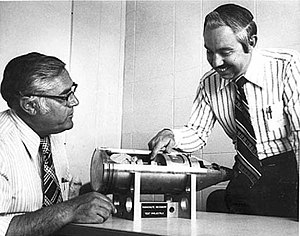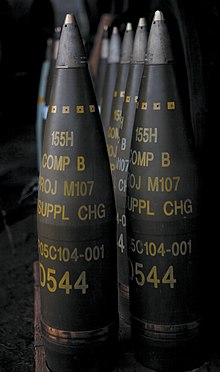
Back قذيفة مدفعية Arabic Mərmi Azerbaijani Снарад Byelorussian Знарад BE-X-OLD Снаряд Bulgarian Granata BS Obús (projectil) Catalan Dělostřelecký granát Czech Artillerigranat Danish Granate German



A shell, in a modern military context, is a projectile whose payload contains an explosive, incendiary, or other chemical filling. Originally it was called a bombshell, contrasting with solid shells used for early rifled artillery,[citation needed] but "shell" has come to be unambiguous in a military context. A shell can hold a tracer.
All explosive- and incendiary-filled projectiles, particularly for mortars, were originally called grenades, derived from the French word for pomegranate, so called because of the similarity of shape and that the multi-seeded fruit resembles the powder-filled, fragmentizing bomb. Words cognate with grenade are still used for an artillery or mortar projectile in some European languages.[1]
Shells are usually large-caliber projectiles fired by artillery, armoured fighting vehicles (e.g. tanks, assault guns, and mortar carriers), warships, and autocannons. The shape is usually a cylinder topped by an ogive-tipped nose cone for good aerodynamic performance, and possibly with a tapered boat tail; but some specialized types differ widely.
- ^ "Etymology of grenade". Etymonline.com. 8 January 1972. Retrieved 27 February 2013.